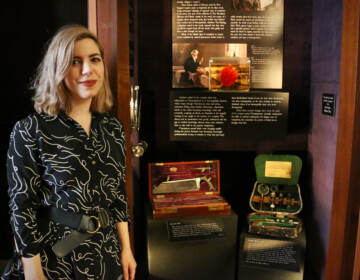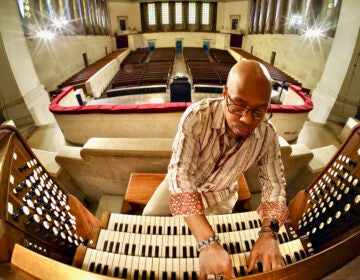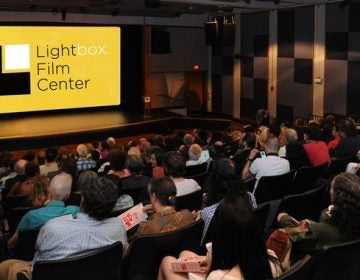Lightbox Film Center screens a portrait of the world in ‘32 Sounds’
Sam Green’s eccentric curiosity follows his ears around the world in the new performance documentary at the Lightbox Film Center.
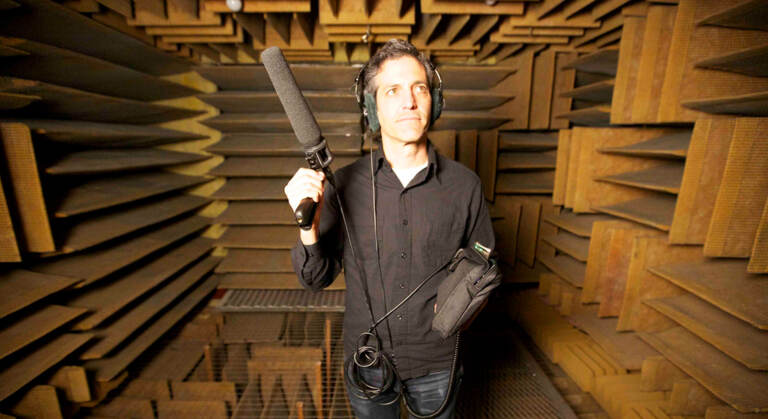
(Courtesy of ArKtype)
As filmmaker Sam Green was piecing together an array of audio curiosities both vast and eccentric for his documentary “32 Sounds,” he stumbled upon accounts of sound artist Annea Lockwood, who reportedly spent the last 50 years traveling around the world making audio recordings of rivers.
“I thought to myself, ‘Who is this person? Recorded the sound of rivers for 50 years?’” Green said. “I had never heard of her, and I quickly realized she was a composer, a sound artist, a performer. She’d been making work since the mid-sixties and was a John Cage-like character.”
From his studio in New York City, Green emailed Lockwood, now 83, out of the blue. That turned into a Skype call, and then a visit to her home on the Hudson River in Crompond, NY.
Green filmed Lockwood while she dropped underwater microphones into a river to listen to what it sounds like below the surface, something she has also done in the Schuylkill River in Philadelphia.
He also captured her quietly sitting on her porch listening earnestly to a chorus of crickets at dusk. She said listening to music is “too intense” since her life partner Ruth Anderson died a year before.
“It’s taken me a while to come back to listening to music because it moves me far too much. It’s so intrinsically associated with our life together,” Lockwood says to Green in the film. “But, little by little.”
Lockwood, with her unwavering curiosity to “listen to the world” and her emotional openness, gives Green’s film a narrative shape.
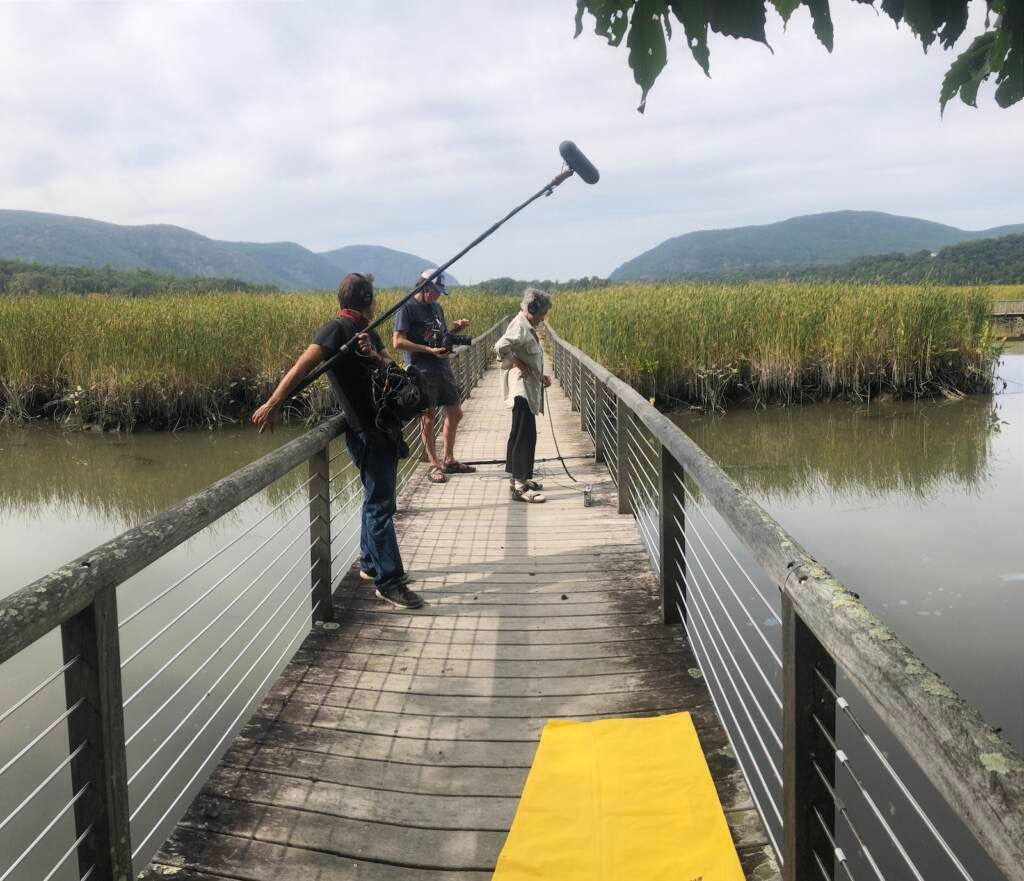
“She was a great pandemic muse,” Green said. “The more I learned about her, the more I was taken with her.”
“32 Sounds” premiered at the Sundance Film Festival earlier this year and was presented at the SXSW Festival. This weekend it will be shown with Green performing live narration at the Lightbox Film Center at the University of the Arts.
Green was nominated for an Academy Award in 2002 for a documentary about the radical 1960s group the Weather Underground. Since then he has devised a unique method of filmmaking wherein he shoots and edits a feature-length film, then performs the voiceover narration live in the cinema space, often with a live band performing the soundtrack on cue. Past productions have included collaborations with the indie rock band Yo La Tengo and the new music string ensemble Kronos Quartet.
For “32 Sounds,” Green collaborated with JD Samson, a guitarist known for her work with the band Le Tigre. However, due to Le Tigre’s touring schedule, Samson will not appear at the presentation at Lightbox, instead Green will play her pre-recorded music on cue.
Screenings can resemble an extremely well-timed lecture, or as Green says a “really fancy PowerPoint.” In an era of “Netflix and chill,” Green wants to make going to the movies an event, again.
“I’m trying to make work that is as big and as meaningful as I can possibly make,” Green said. “The tools of cinema are a huge image and big sound that overwhelms you. It’s almost like going to church.”
Ironically, this “live” cinema performance is best heard through headphones. In his effort to spotlight the subject of his film at its best and most profound, Green brought in Oscar-winning sound designer Mark Mangini to create a soundtrack with audio nuances easily missed if heard through speakers. Audience members will be issued headphones for the screening at Lightbox (no, you can’t keep them).
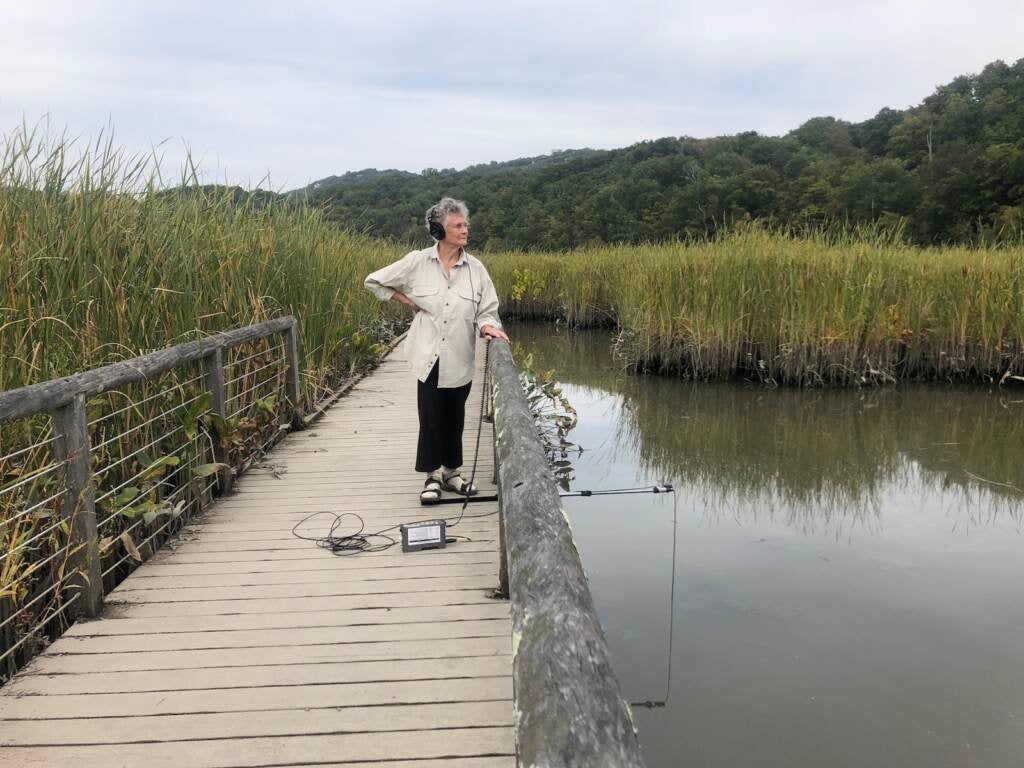
The 32 sounds selected for this film form a subjective and ultimately personal map of Green’s whimsical journey through things he finds interesting: from the inventor of the binaural microphone shaped like a human head to mimic the way sounds bounces around our skulls; to trumpeter Mazen Kerbaj who recorded himself on his balcony in Beirut in 2006 performing a live duet with real bombs falling near his apartment; to a recording in the British Library Sound Archive of a now extinct Hawaiian bird singing a mating call, not realizing he was the very last of his species and no one was going to respond.
Green uses footage he shot in 2006 of Nahanda Abiodun, an American expatriate living in exile in Cuba, wanted by the FBI for her involvement in the Black Liberation Army in the 1970s. She later died in 2019.
Green asked Abiodun to listen to some of her favorite songs on headphones so he could capture her facial reaction on film. She listened to “Ain’t No Stoppin’ Us Now,” by McFadden and Whitehead on Philadelphia’s International Records label, and remembered using that song during Black Liberation Army rallies in 1979.
As she relives the music in 2006, bopping to R&B in headphones, Green’s camera lingers on her face, drinking in the look of joy that music brings.
“She heard the songs and then traveled through space and time to these other moments of her life,” Green said. “Especially for someone who is in exile, she yearns for home. There was extra feeling to these songs.”
One of Green’s discoveries that guided this journey was Charles Babbage, a 19th-century inventor who created the first mechanical computer. He also believed sound waves never disappear, but continue to exist in the air forever. Anything that anyone ever said could potentially be found again.
In 1827, Babbage suffered from enormous grief: his wife, father, and two of his eight children all died in the same year. In the film, Green explains Babbage believed sound could be a way to connect with the dead.
Modern recording technology could prove Babbage correct. In the film Green brings out his own collection of old voicemail tapes from the 1980 and 90s, when answering machines recorded to standard cassette tapes. He plays them back to hear the voices of friends and family who have died over the years.
“All of my work has been trying to make sense of the odd experience of being alive,” Green said. “That’s what I wanted to do with sound. It’s a film about sound. It’s not definitive. It uses 32 little sections to try to create a portrait. A highly subjective portrait. My portrait.”
“32 Sounds” will be presented on Saturday night, 7 p.m. at the Lightbox Film Center at 401 South Broad Street.

Saturdays just got more interesting.
WHYY is your source for fact-based, in-depth journalism and information. As a nonprofit organization, we rely on financial support from readers like you. Please give today.




